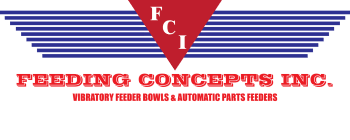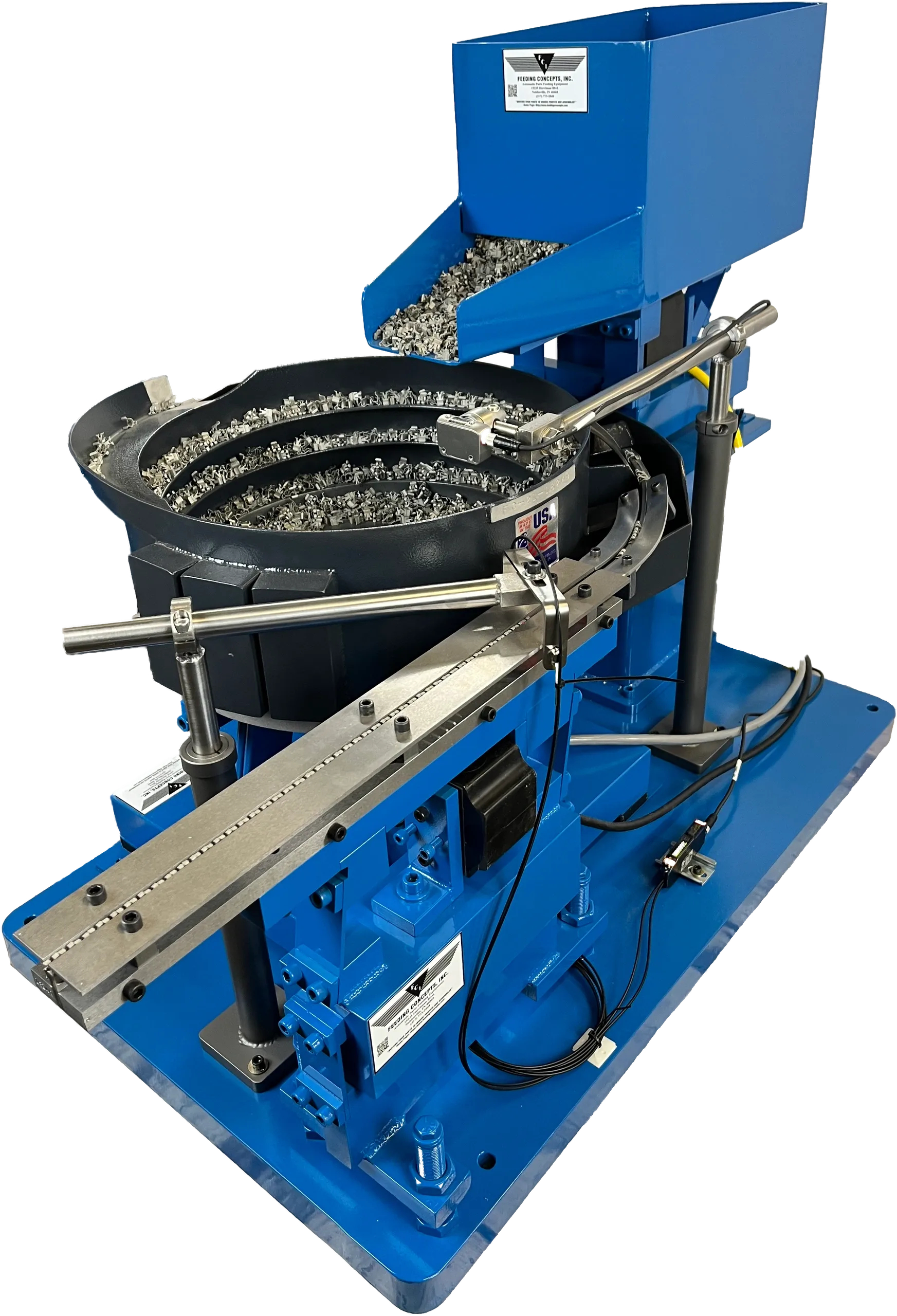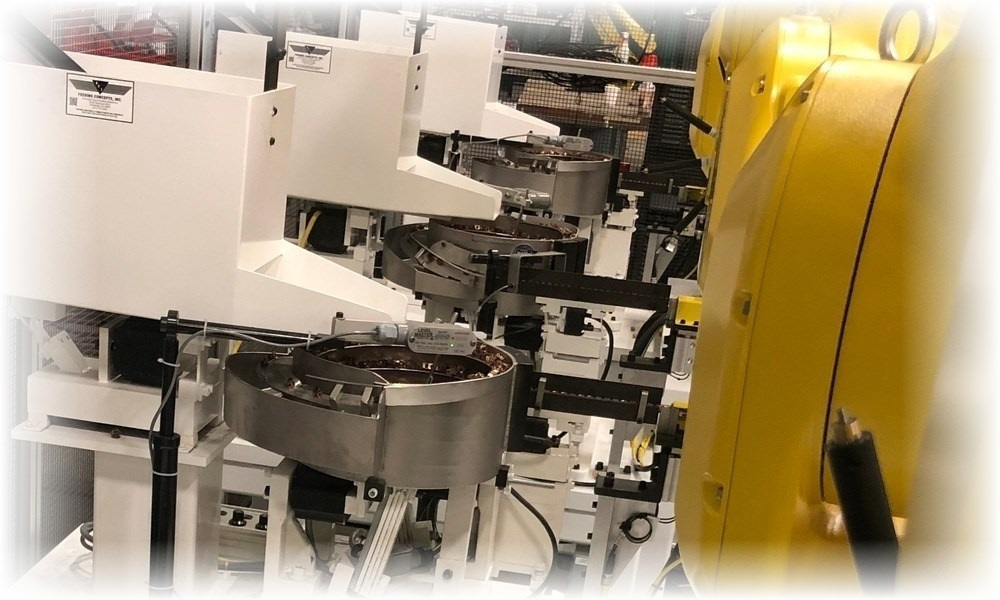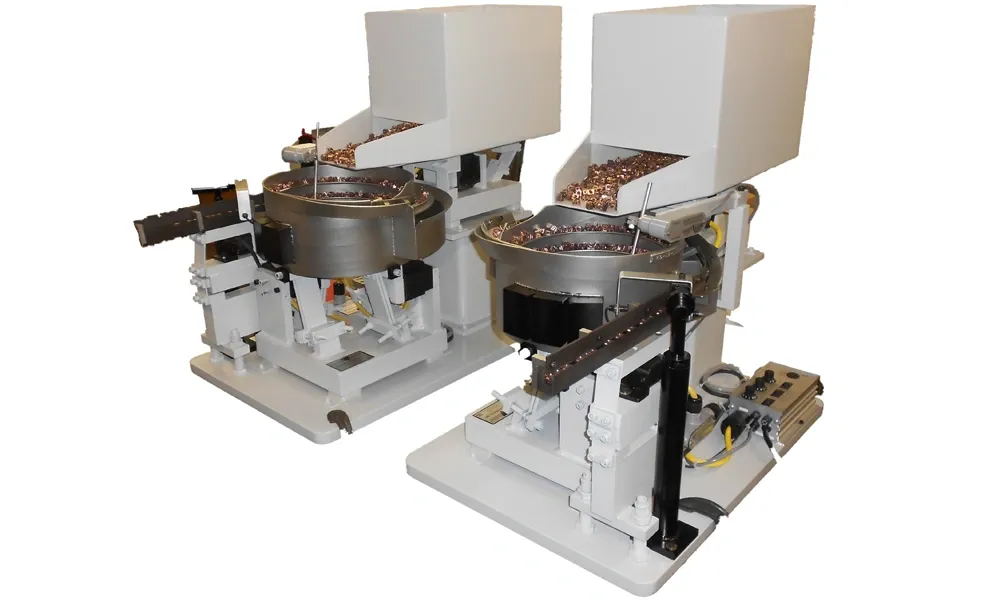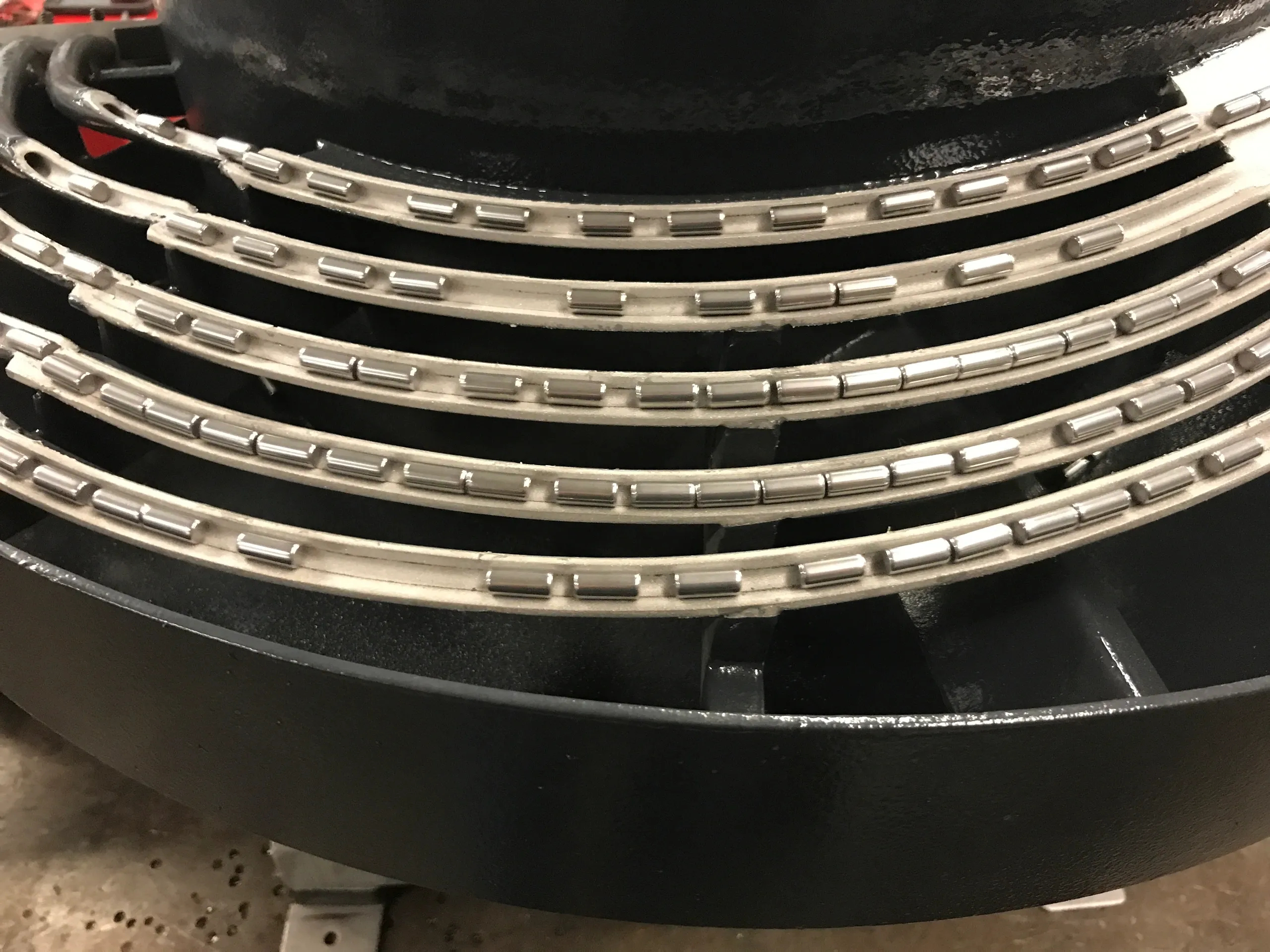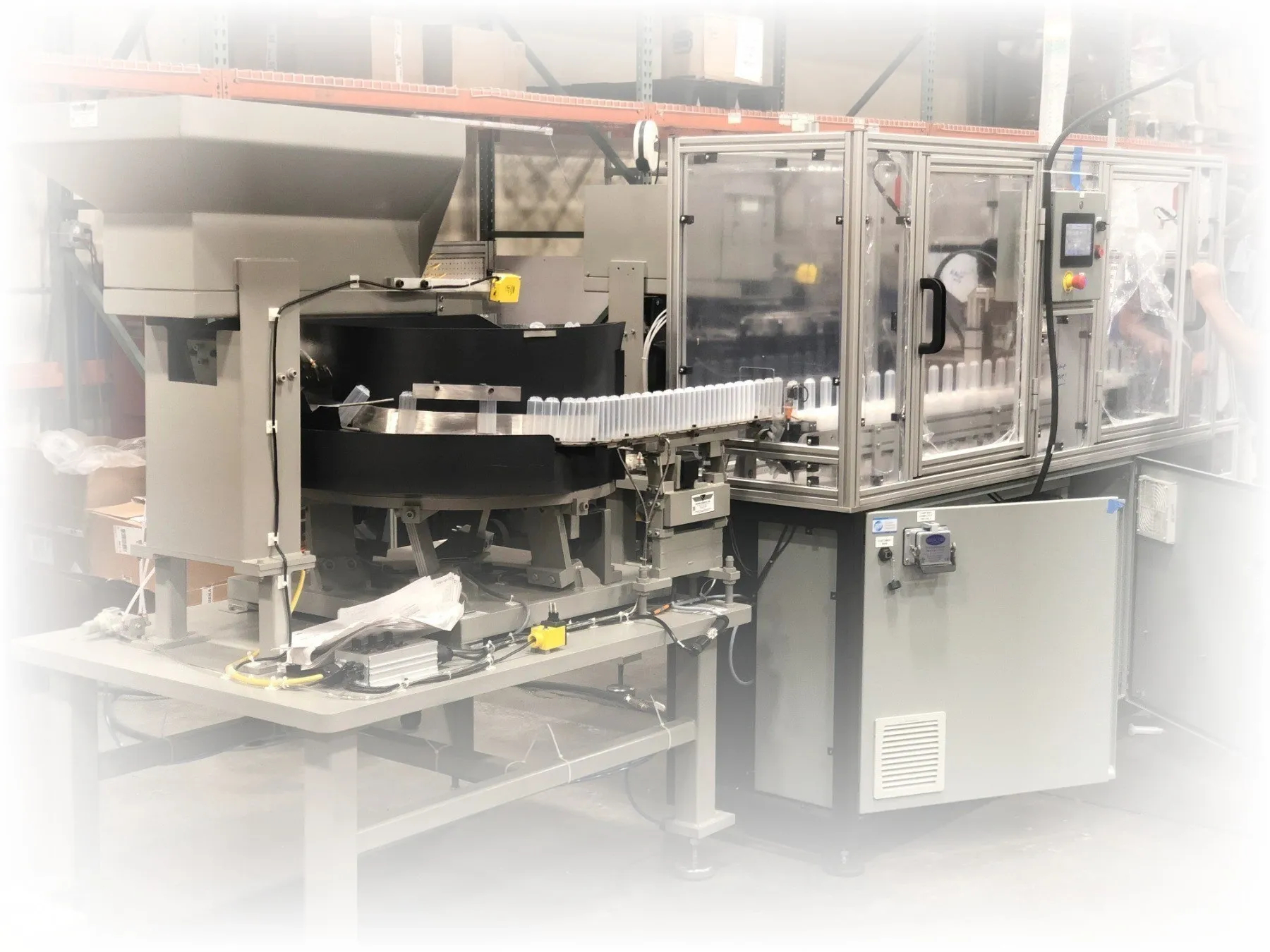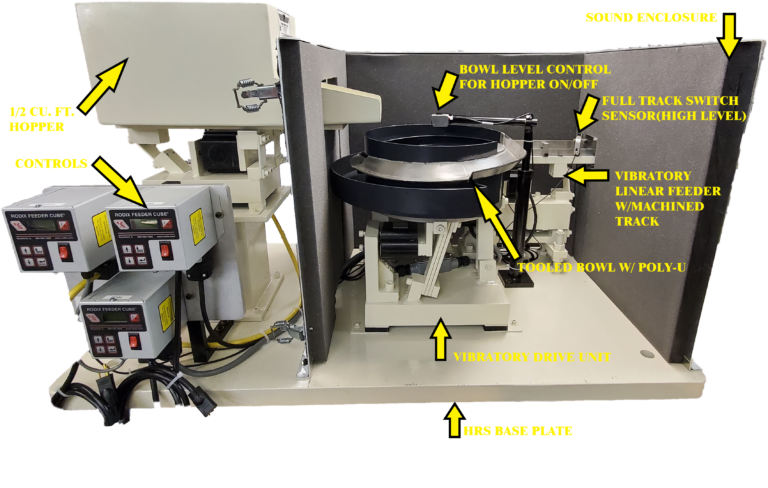
Stainless Steel Vibratory Feeder Bowls
Vibratory feeder bowls are the most versatile type of parts feeder; able to handle parts with the size ranges from approximately sixty cubic inches to those, which are very small. Vibratory feeders occupy a minimal amount of space while orientating, selecting, and sorting parts in the most cost-effective manner possible. The most common types are straight-wall designed with outside construction. Other variations such as funnel feeders, ball bearing feeders, and spiral cascades are also in the lineup.
Adding a Feeder Bowl to an Existing Line?
Switching over from an obsolete assembly process is never easy. We are here to help from the very beginning of the project to completion. Meeting the customers feeding system goals is our number one priority.
Cost is the typically the most important aspect in deciding if a feeder bowl will be needed. Automating an existing process with a vibratory feeder bowl provides an ROI unlike no other pieces of equipment. No other system can successfully feed parts out uniformly in the same footprint while also holding an acceptable price for manufacturing expenditures.
Real estate is a premium. Vibratory bowls occupy a minimal space footprint to fit in any enclosure or existing station.
From the floor up your system can be customized to fit any needed requirements. These customizations provide an added flexibility to allow for a seamless integration.
Some customers ask, “what is the needed maintenance for my feeding system?”. The answer to that in a majority of applications is keeping the system clean and free of debris. Most vibratory feeder systems are designed to run fully automatic with no additional maintenance or setup. If setup is needed it is typically only on bowls that run more than one part/product run.
Some bowls are tooled to run in excess of 100+ parts per minute. These systems typically have a high speed drive unit or a specially designed tooling setup for heavy positive parts volume.
Operating a vibratory parts feeder system is simply using the controller once installed. Feeder controls are basic units that can be operated by any personnel. Feeder amplitude is the primary adjustment that allows you to slow or speed up the vibration speed. Once the system is installed it essentially plug & play. VF and DRO controls allow for remote PLC input, operator code lockout, soft start, variable frequency range, and auto tune accelerometers.
Virtually no pinch points and electrical hazards. All edges deburred or radiused. CE/UL control systems and motors protected with shrouds or other protective enclosures.
Adjustable or interchangeable tooling for multi-part applications. If you require a bowl to feed multiple product runs, we can provide a simple part changeover procedure which usually consists of switchable blades and/or air-jets. All bowls shipped out of our facility include a detailed setup instruction for the correct part vibration setting, tooling blade, and active air-jet selection.
Custom Fab’d Tooling For Part Orientation
The hand fabricated tooling allows your parts to be presented in a set position. This can be accomplished by either a mechanical cam/sweep or air assistance. The tooling construction involved uses a combination of forces such as gravity, balance, and rotational vibration to deliver a specific orientation as per the customers requirements. Our team of builders and engineers have a combined knowledge base that allows us to construct such systems which is why our vibratory feeder core capabilities are extensive.
Concept to Completed Machine
Designing and installing a new production line? Wondering if a vibratory feeder will need to be implemented? Will service on, or refurbishment of vibratory feeders be an option? Can an existing vibratory feeder bowl be modified for various future applications? What about retooling and retrofitting in old and new production lines? Wanting modular updates? These are situations that our engineers and technicians address every day. Our customers rely on us because they know we focus on finding solutions to their current needs, and we design with future changes in mind. It’s, our job – we like it and so will you!
Bowl Finishings
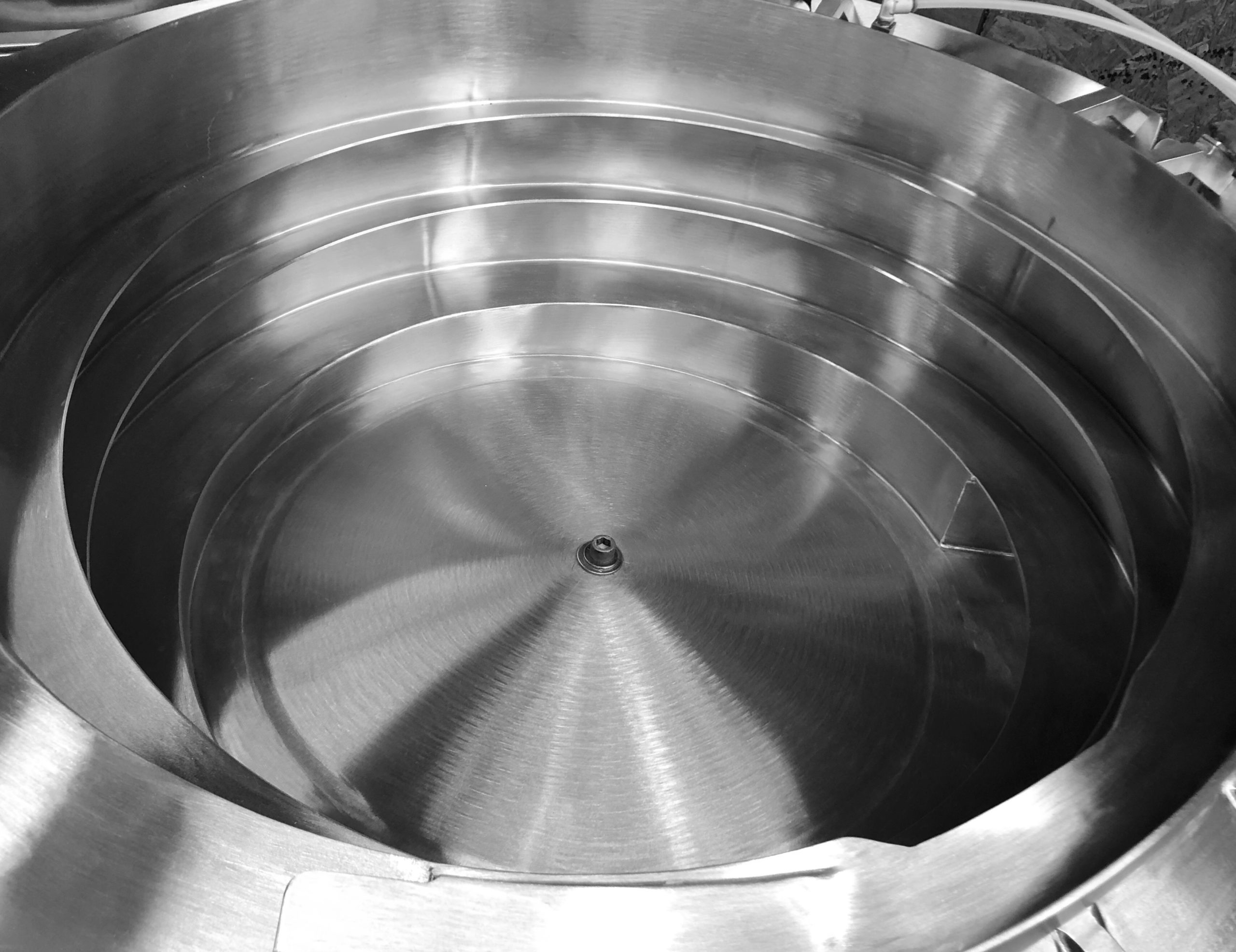
Hand Polish
Great for pharmaceutical and food grade applications. Our 4-step process for hand polishing brings the bowl finish to an acceptable quality for clean room and hygienic environments.
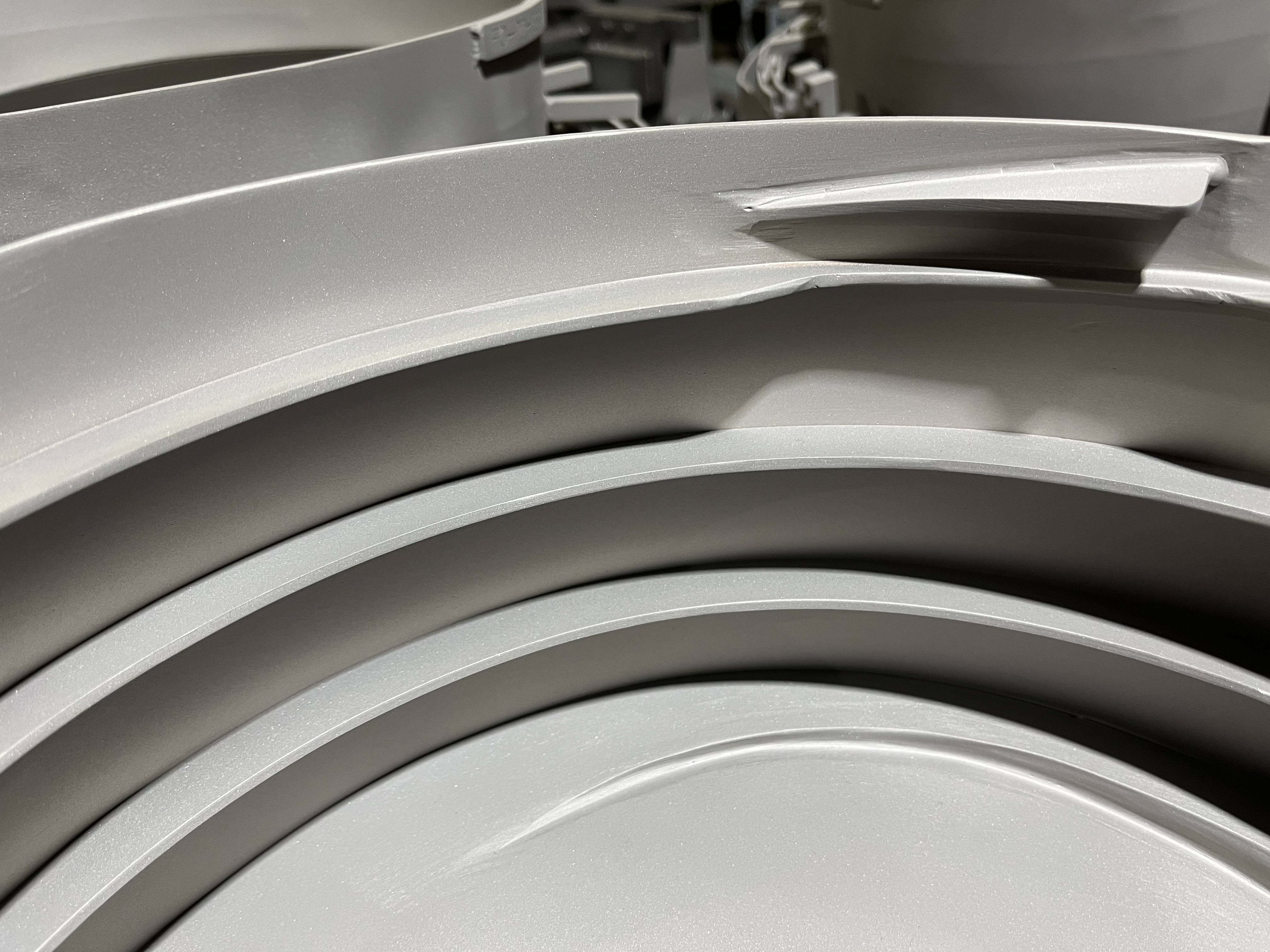
Ceramic Bead Blast
Simple and affordable finishing that has been an industry standard for many years. End result is a clean surface free of scratches, blemishes, and other impurities.
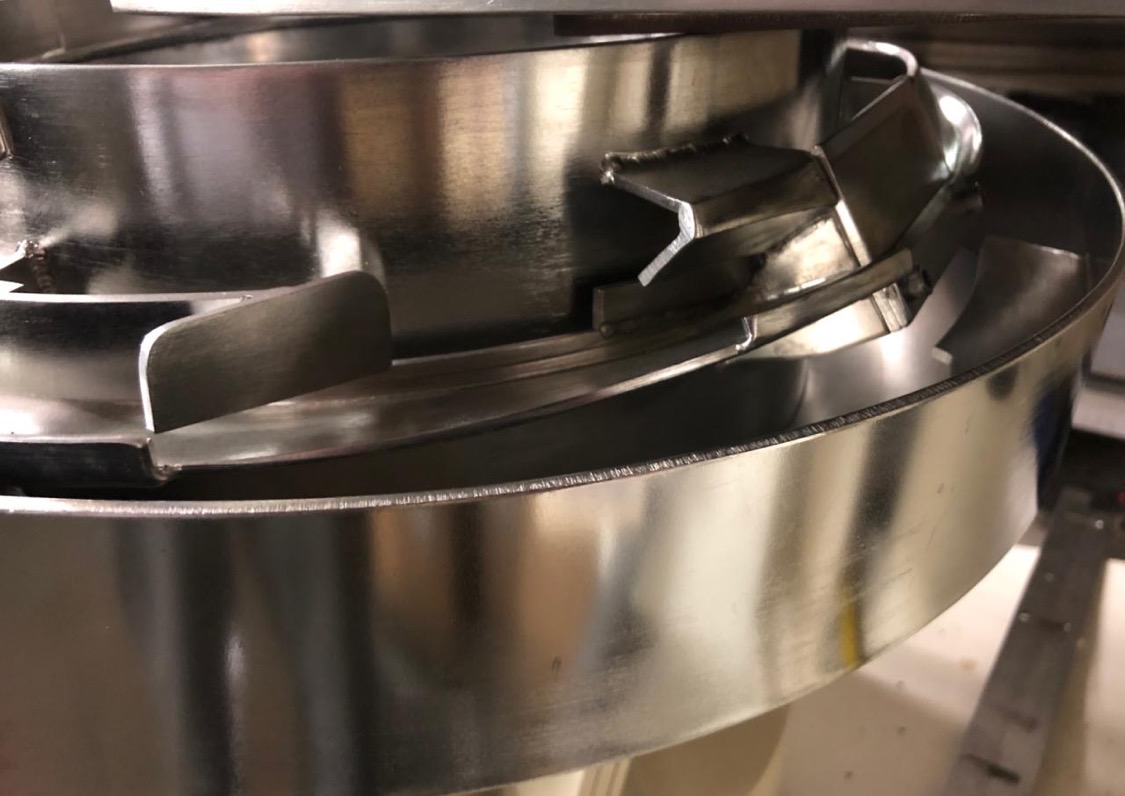
Electropolish
Mirror-like finish. Suitable for food, semiconductor, and biopharmaceutical applications. Electropolishing is 30x more effective than passivation at eliminating corrosion and surface defects.
Bowl Coatings
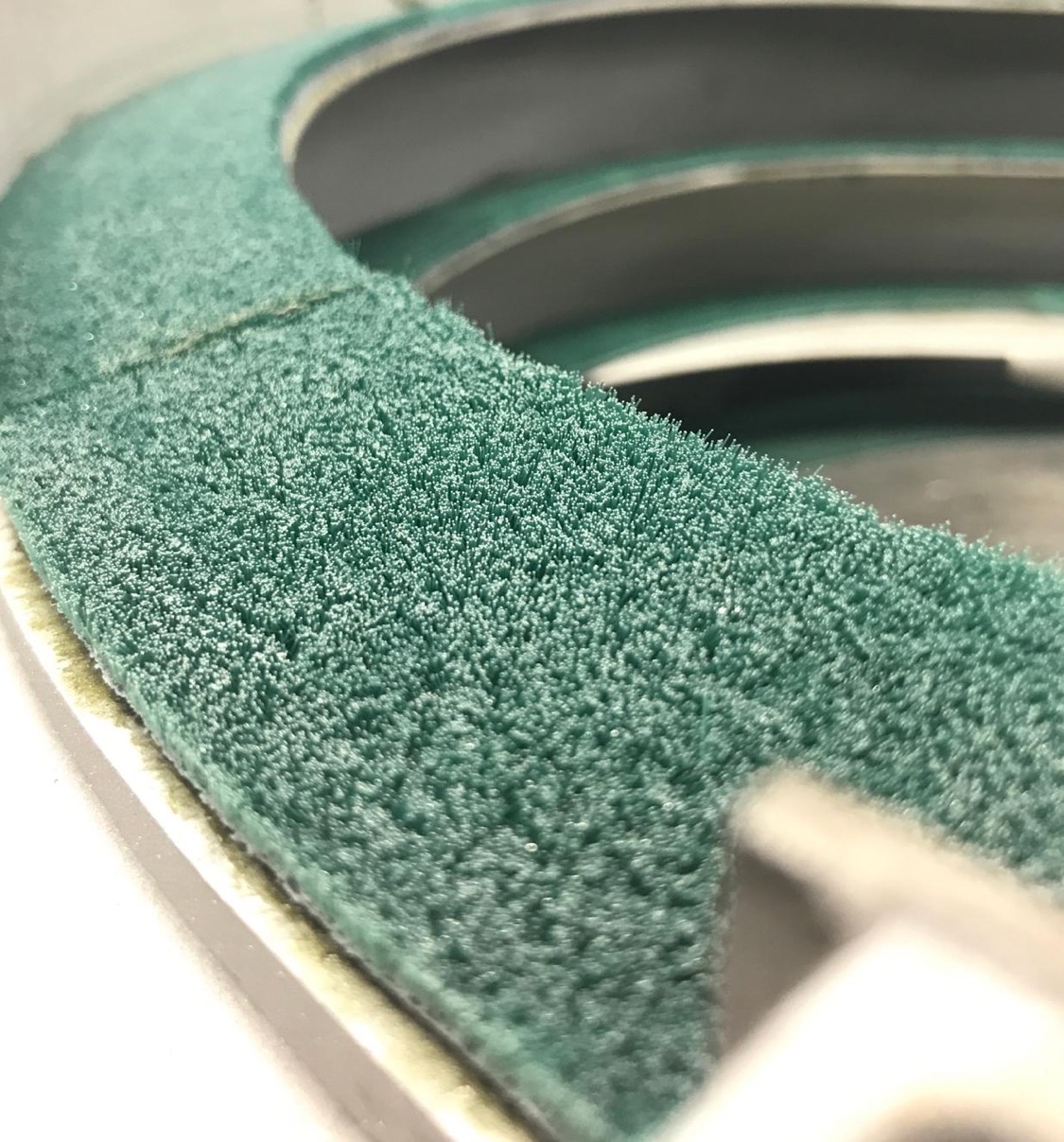
Brushlon
Very similar to artificial grass but with a finer composition. The dense angled brushes allow the bowl to feed a wide variety of parts easily. Heavy parts or parts with abrasive contact surfaces do well with Brushlon lining.

Surlyn/Teflon
Compliant coatings with the FDA. Good for food and pharmaceutical applications. Surlyn provides excellent corrosion protection with high impact strength and good weathering capability. Teflon offers total chemical inertness and excellent dielectric stability.

Polyurethane
The most common bowl coating on the market with great durability to improve the life of the bowl basic construction. POLY-U also assists in getting parts up the spiral tracks and provides a convenient sound reduction once applied.
Optional Add-ons
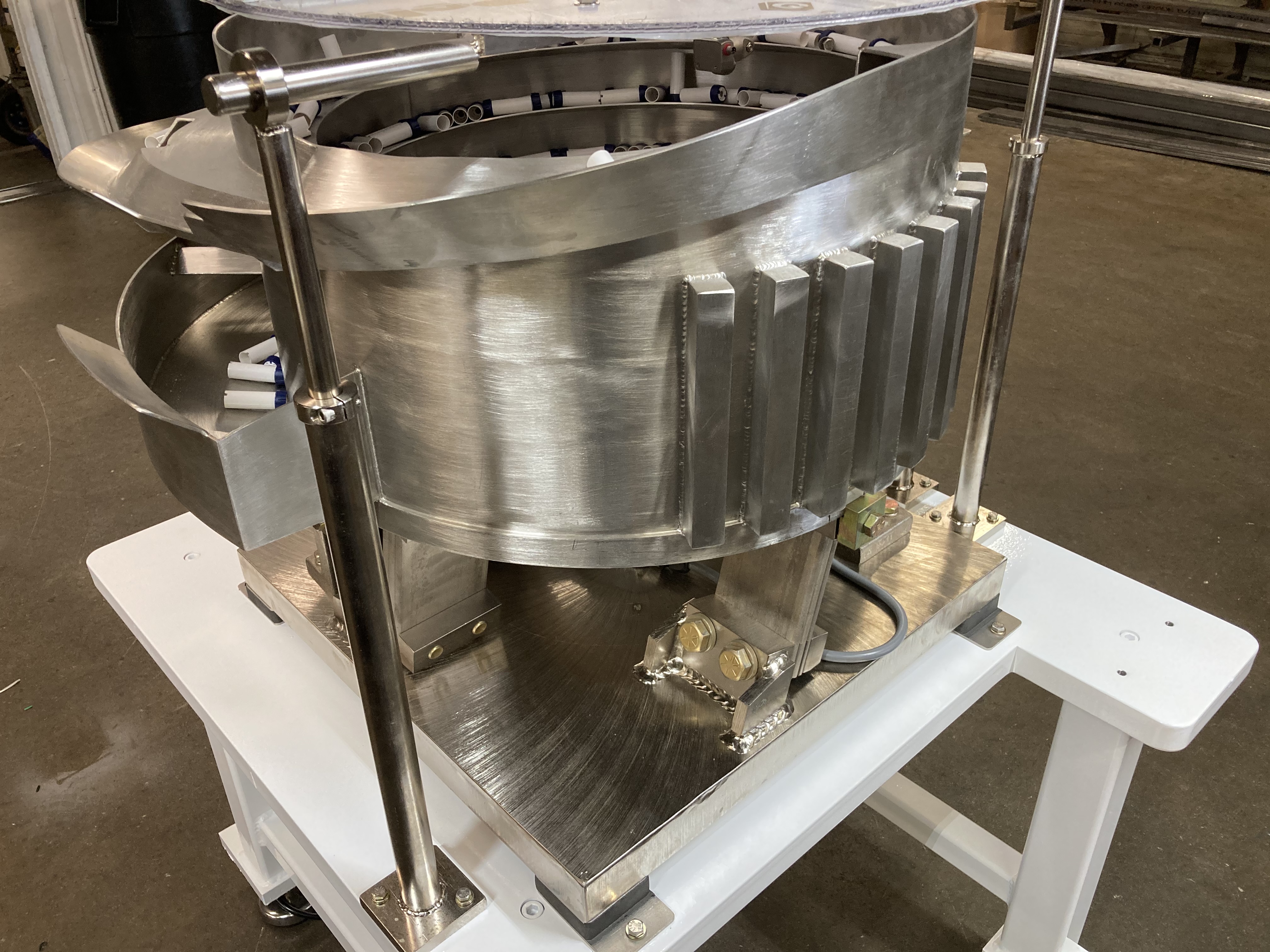
Nickel Plating
Corrosive applications and washdown facilities have strict requirements when it comes to materials non-stainless. Nickel plating offers solid protection for these environments.
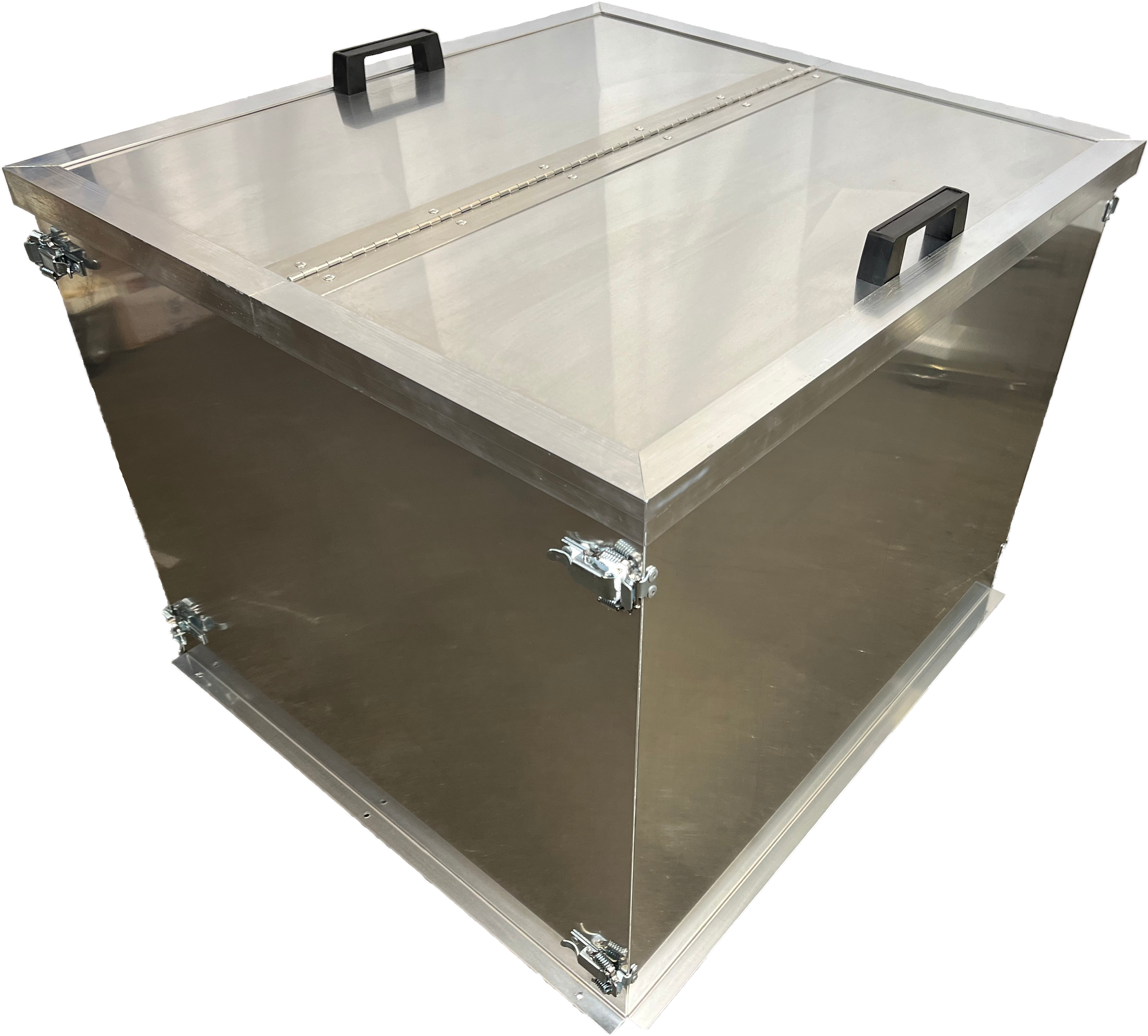
Sound Enclosure
With our charcoal polyester acoustic foam and polished aluminum sound barriers, your feeding system will operate at an appropriate sound level in a production environment.
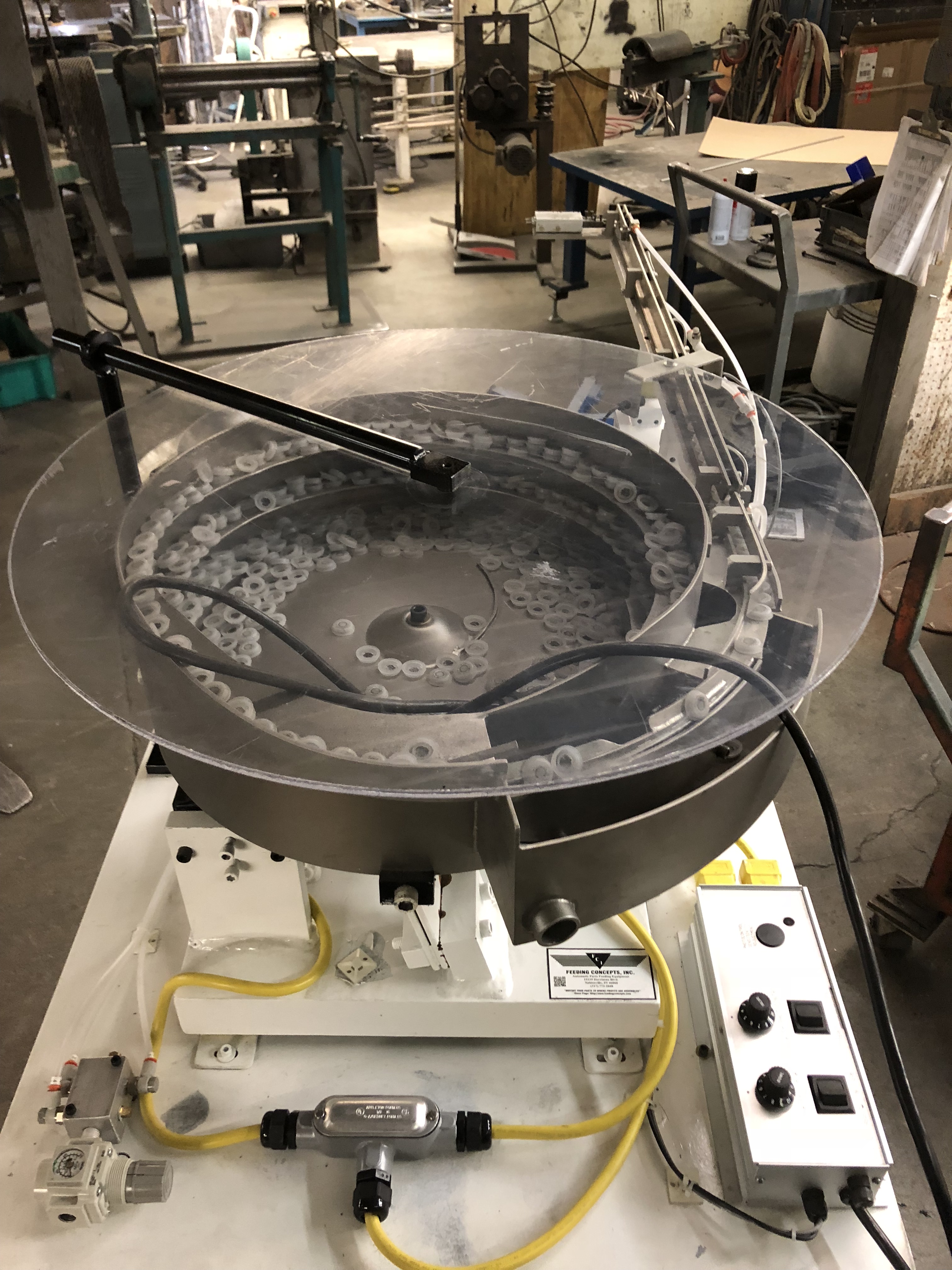
Lexan Cover
Lexan covers provide an extra barrier to prevent unwanted particles from getting inside the bowl such as dust, metal shavings, and other contaminates.

Stainless Fasteners
Great for any hygienic application. Opting for stainless fasteners on the bowl tooling will give added protection and corrosive resistance.
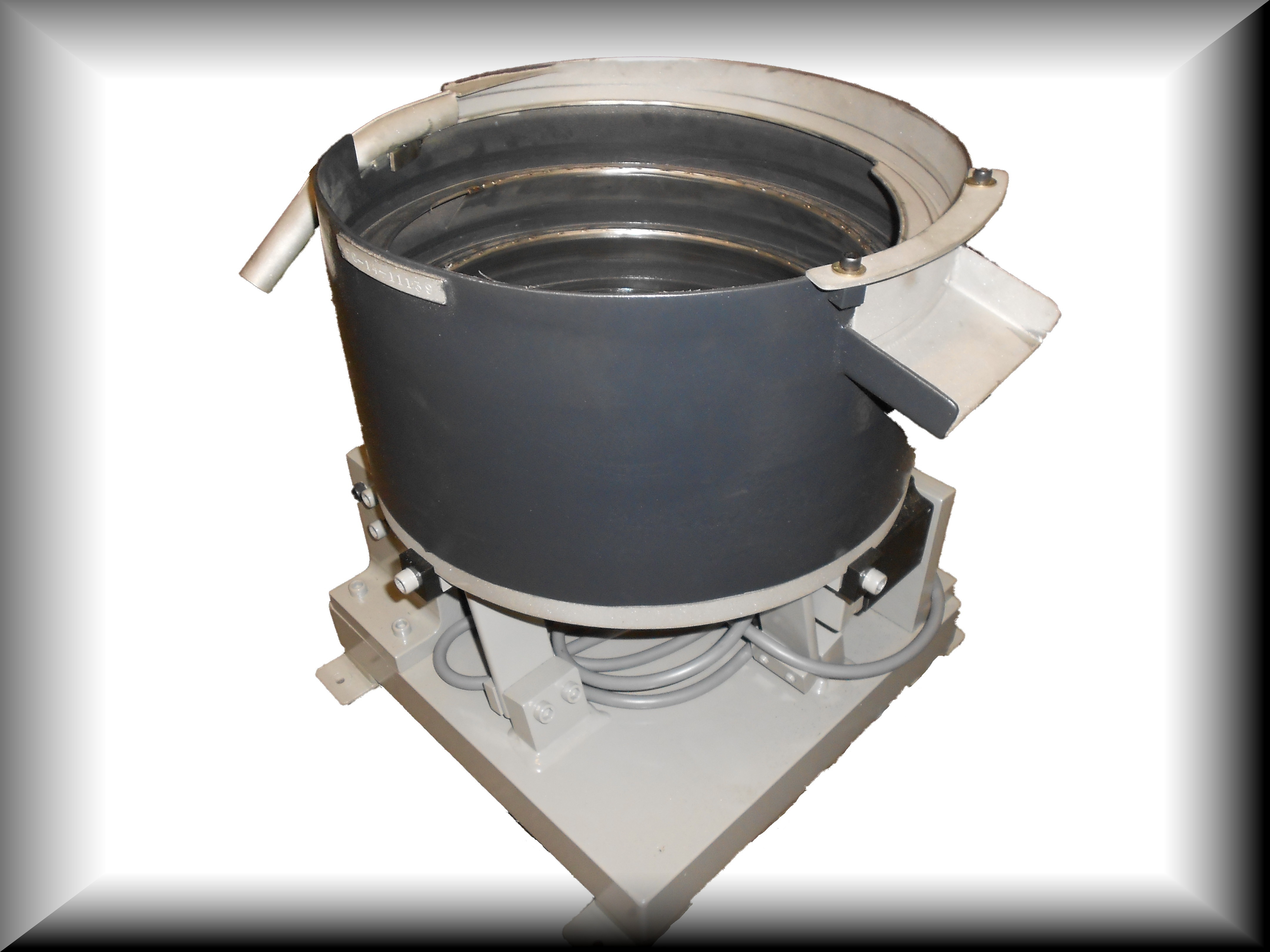
Purge Gate/Quick Dump
These are devices are located at the top of the bowl right before it pulls out into the “tooling”. They can be used for cleaning out a bowl or emptying all other parts to start the next part change over.
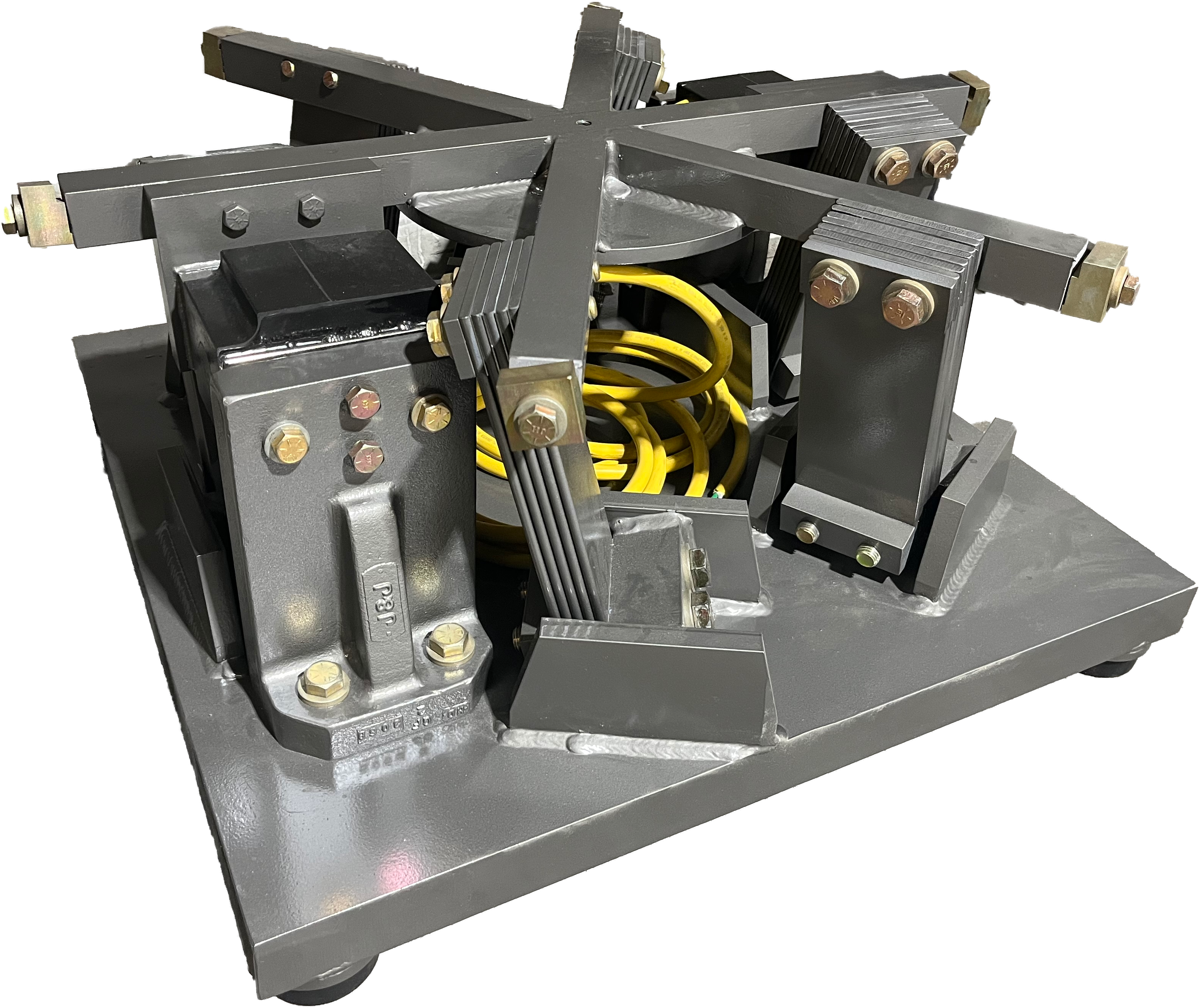
High Speed Drive Tuning
Some applications require high feed rates on larger parts. High speed drive units are essential for these types of situations. Larger coils and leaf springs provide more vibratory power to keep the system moving.
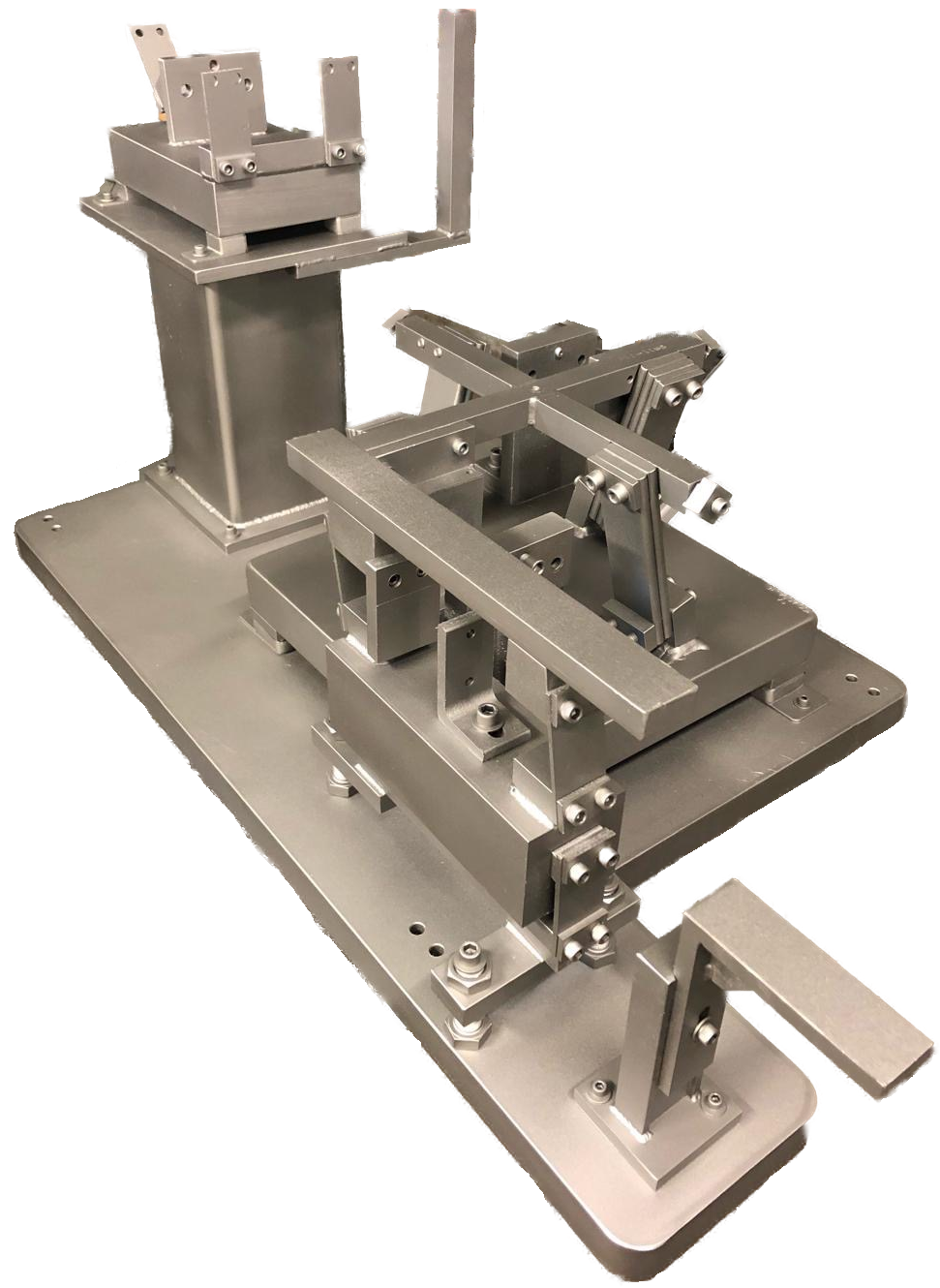
STEEL-IT System Protection
A 316L stainless steel flake coating system that provides extraordinary protection against corrosion, abrasion, salt, alkalis and other chemicals. USDA compliant and an excellent alternative to standard enamel paint.
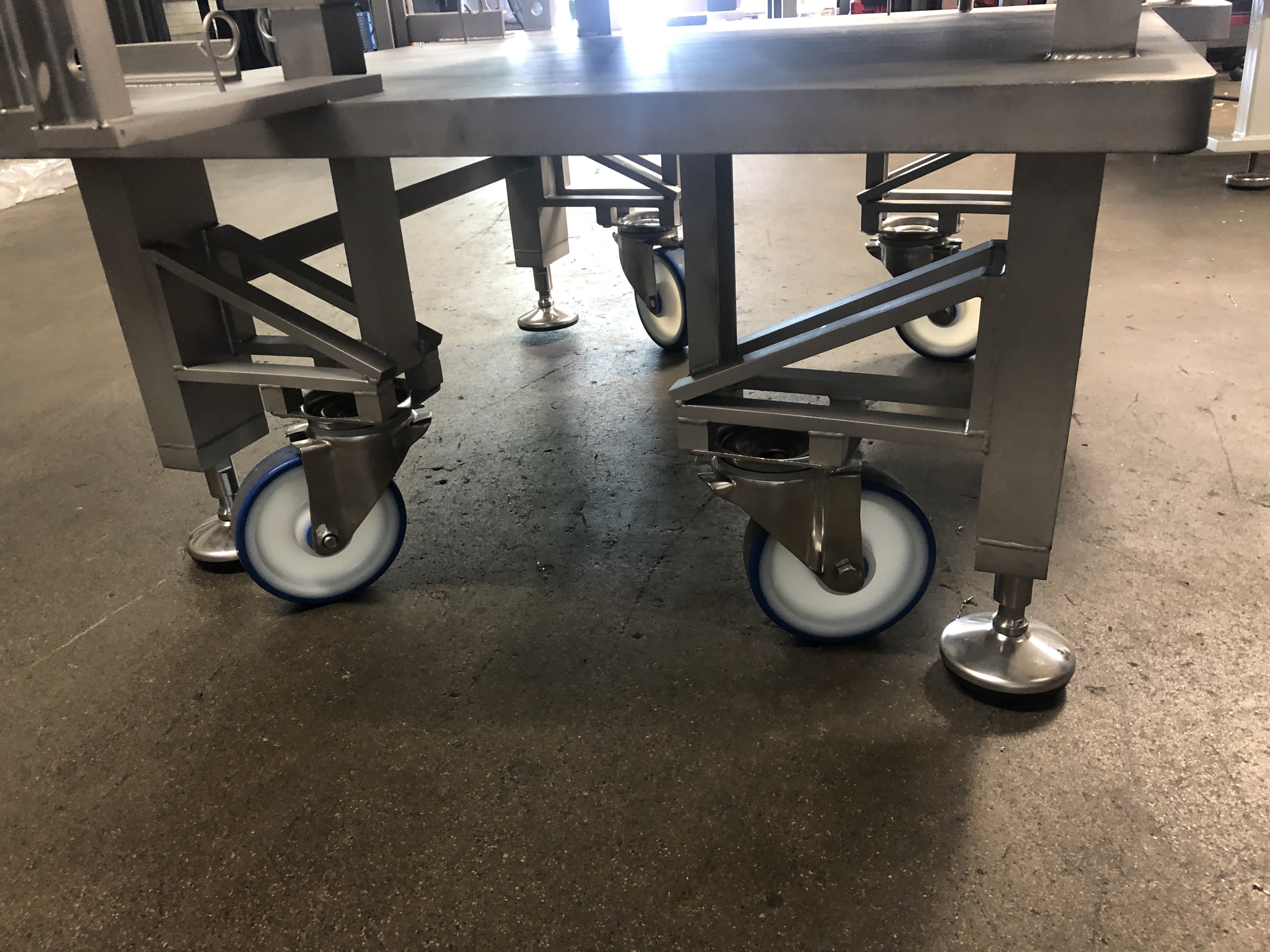
Casters
Adding casters to a feeding system gives extra flexibility in the event the system needs to be shifted for regular PM's or relocated to a different feeding station. Also, this add-on can help make installation seamless and easy.

Variable Frequency Controllers
This controller upgrade allows you to dial in the perfect, harmonic frequency for your feeder bowl, auxiliary hopper, or linear inline. A feeder operating at its resonant frequency will perform more efficiently, last longer, save on maintenance costs and consume less power.
